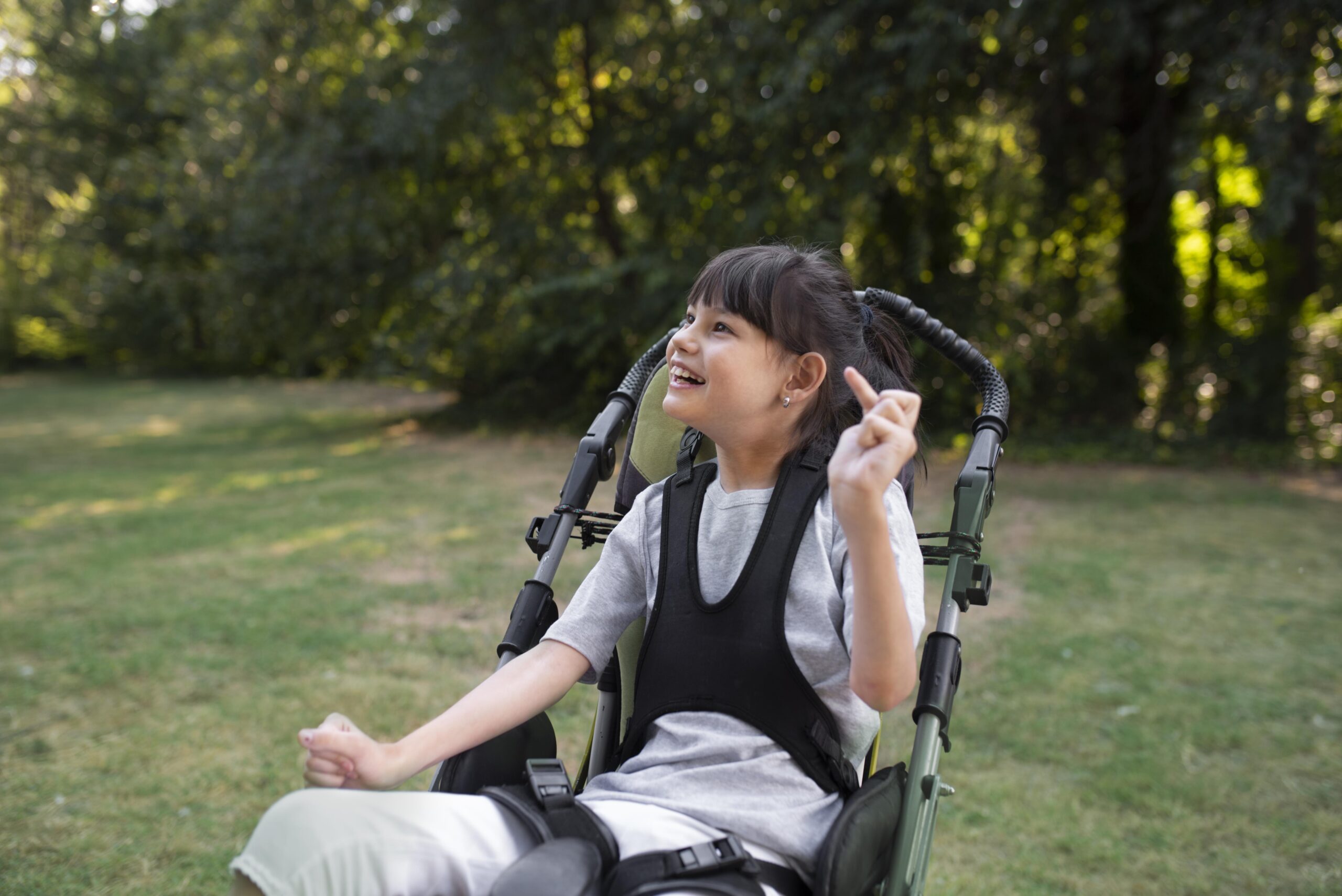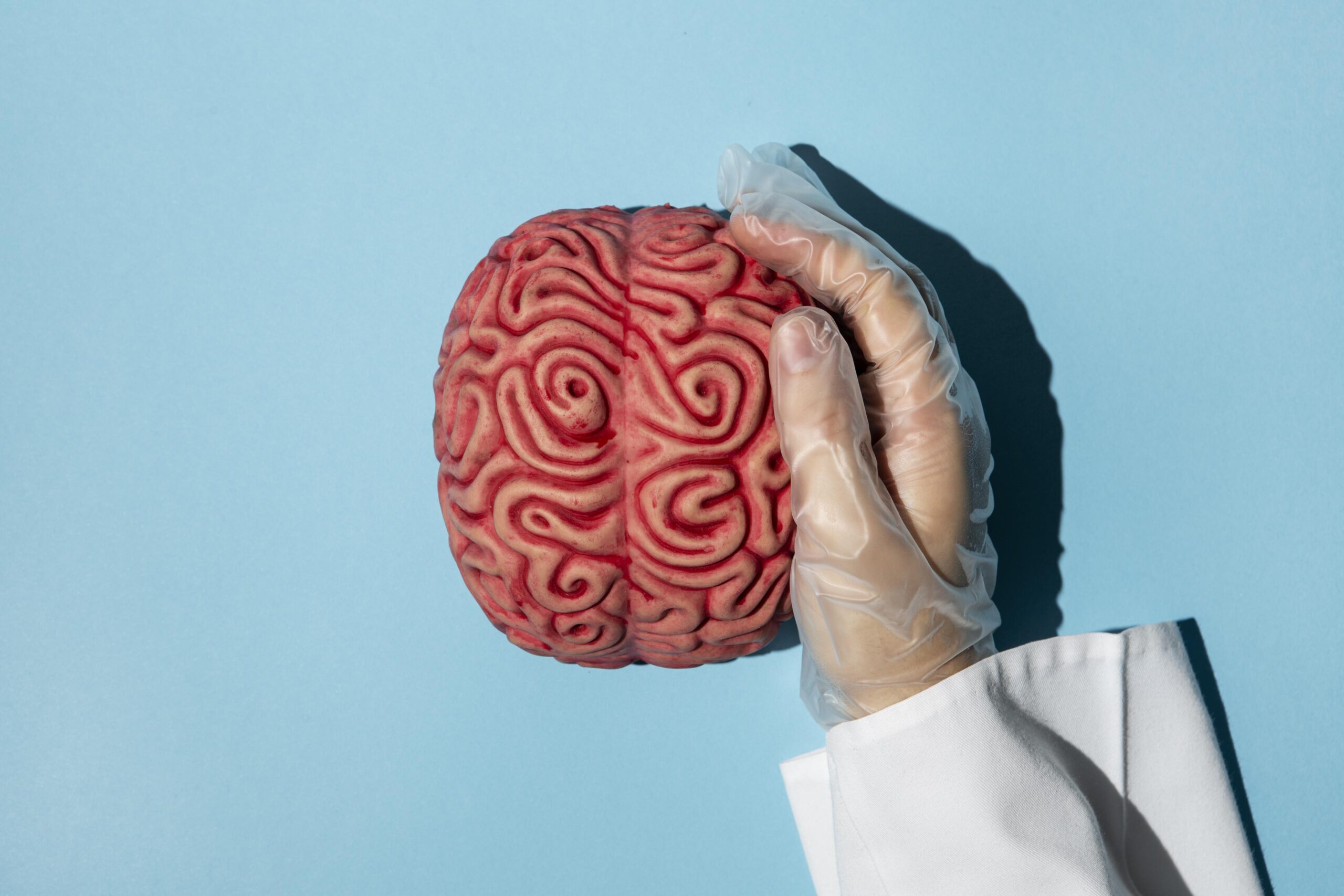Cerebral palsy is a symptom that mainly affects the musculoskeletal system. The impairment of motor functions in each individual with CP will be different. Some people may only be characterized by a certain degree of “clumsiness,” while others will be dependent and need lifelong care.
The degree of motor disability depends primarily on the area where the brain tissue was degraded. The size and location of the damage are essential. Significantly, cerebral palsy does not progress over time. However, as we age, we may see more symptoms.
Types of signs and limitations in limb movement classify cerebral palsy. Below, you will find the most common types.

Hemiplegia![]() is a muscle weakness on only one side of the body. This condition is caused by damage to the corticospinal tract in the brain, with paresis occurring on the side opposite the location of the damage. The muscles are excessively stiff or, on the contrary, very flaccid.
is a muscle weakness on only one side of the body. This condition is caused by damage to the corticospinal tract in the brain, with paresis occurring on the side opposite the location of the damage. The muscles are excessively stiff or, on the contrary, very flaccid.
In the early period of a person's life, asymmetry of spontaneous movements and asymmetry of body position appear. Around the age of 4, there may be visible:
Bilateral paralysis![]() usually affects the lower limbs. Therefore, learning to walk, as well as walking itself, is very difficult. Patients are often forced to use walkers and crutches. The dexterity of the hands is not limited. The individual only has problems with precise movements.
usually affects the lower limbs. Therefore, learning to walk, as well as walking itself, is very difficult. Patients are often forced to use walkers and crutches. The dexterity of the hands is not limited. The individual only has problems with precise movements.
The spastic paraplegia symptoms depend on how extensive the spinal cord damage is. The symptoms will be stronger the higher the damage occurs. However, in each case, symptoms will appear gradually. The first symptoms of spastic paraplegia may include:
As spastic paraplegia develops, partial or complete paralysis may occur.
Bilateral hemiplegia![]() (diplegia) is characterized by paralysis of two limbs. This form is undoubtedly the most severe form of CP, manifesting itself in much greater paralysis of the upper limbs than the lower limbs. As years pass, increased muscle tension occurs in the upper limbs, with a simultaneous decrease in the tension of the head and chest muscles.
(diplegia) is characterized by paralysis of two limbs. This form is undoubtedly the most severe form of CP, manifesting itself in much greater paralysis of the upper limbs than the lower limbs. As years pass, increased muscle tension occurs in the upper limbs, with a simultaneous decrease in the tension of the head and chest muscles.
Individuals affected by this form of cerebral palsy experience difficulties with speaking and eating. This form is often associated with prenatal damage to the central nervous system or developmental disorders. Significant mental retardation is also possible.
Quadriplegia![]() (also known as tetraplegia) affects the entire body: head, chest, arms, and limbs. Both sensory disturbances and the inability to move the paralyzed limbs occur. Depending on the stage of the condition, individuals can only crawl, sit, or lie down.
(also known as tetraplegia) affects the entire body: head, chest, arms, and limbs. Both sensory disturbances and the inability to move the paralyzed limbs occur. Depending on the stage of the condition, individuals can only crawl, sit, or lie down.
It is probably easy to guess that quadriplegia significantly affects the daily functioning of patients. Affected people are usually unable to live independently. Most patients with quadriplegia require the use of wheelchairs. Quadriplegia always involves rehabilitation. This action is intended to reduce the likelihood of developing complications (e.g., bedsores, lung diseases, or muscle contractures).
A characteristic feature of the extrapyramidal form![]() is various types of involuntary movements, mainly affecting the muscles of the face and the entire head, which are intensified by strong emotions. The extrapyramidal form of cerebral palsy manifests itself between 12 and 18 months of age. Accompanying symptoms include:
is various types of involuntary movements, mainly affecting the muscles of the face and the entire head, which are intensified by strong emotions. The extrapyramidal form of cerebral palsy manifests itself between 12 and 18 months of age. Accompanying symptoms include:
The cerebellar form![]() is the least frequently diagnosed form of cerebral palsy. The distinguishing feature of the disease is the so-called intention tremor: when trying to move, the limb trembles. In some forms, muscle weakness is a long-lasting symptom.
is the least frequently diagnosed form of cerebral palsy. The distinguishing feature of the disease is the so-called intention tremor: when trying to move, the limb trembles. In some forms, muscle weakness is a long-lasting symptom.
Cerebral palsy results from damage to brain parts![]() that control movement at the stage of its early development. This damage is non-progressive and results in abnormalities in movement and posture.
that control movement at the stage of its early development. This damage is non-progressive and results in abnormalities in movement and posture.
Brain tissue damage occurs during its development, most often before the baby is born and less often during or after birth. The damage may be caused by various factors, such as:
It is not always possible to precisely determine what caused the individual's condition. However, this factor had to act within a particular time and disappear, leaving a trace of changes in the brain tissue. Then, the damaged tissue cannot function properly.

Repairing damaged tissue is impossible, but you can count on the plasticity of the child's brain. It is a property by which healthy brain tissue partially tries to take over the function of damaged tissue. Thanks to multi-profile rehabilitation, therapists try to make the best use of the child's development potential to minimize the effects of the damage. The effects of rehabilitation are better if therapy is started early.
The risk factors for cerebral palsy![]() are:
are:
However, a newborn born at term with normal weight, without complications during the fetal period, may also develop symptoms characteristic of cerebral palsy.
The symptoms![]() most often noticed by parents are the lack of skills such as proper stabilization of the head and chest and the inability to sit and walk within the expected age range. For an experienced observer, it is possible to notice the child's abnormal motor development earlier – its spontaneous motor skills are different from those of healthy children, the child's incorrect positioning, too much or too little muscle tension, abnormal reflexes, and persistent asymmetry.
most often noticed by parents are the lack of skills such as proper stabilization of the head and chest and the inability to sit and walk within the expected age range. For an experienced observer, it is possible to notice the child's abnormal motor development earlier – its spontaneous motor skills are different from those of healthy children, the child's incorrect positioning, too much or too little muscle tension, abnormal reflexes, and persistent asymmetry.
Asymmetrical positioning of a healthy infant may occur until approximately three months of age. Implementing the correct rules of care should not impede the child's development. Parents who are uncertain about their child's developmental progress should consult a pediatrician, child neurologist, or certified infant therapist.
Children diagnosed with cerebral palsy may also experience other accompanying problems. Therefore, multi-profile rehabilitation of the child should be planned. Troubles that require additional diagnosis include hearing and vision disorders, intellectual disability, seizure disorders, pain, and feeding problems.
Observation by an experienced doctor or therapist may help make an early diagnosis![]() and, consequently, early initiation of therapy. Therefore, children who are at increased risk of developing the disease are referred to specialist care before symptoms become fully apparent. The risk group includes, among others, premature babies and children born with meager body weight. However, it should be remembered that in a seemingly healthy, full-term newborn, a problem may appear after a few months that was not visible in the first days of life.
and, consequently, early initiation of therapy. Therefore, children who are at increased risk of developing the disease are referred to specialist care before symptoms become fully apparent. The risk group includes, among others, premature babies and children born with meager body weight. However, it should be remembered that in a seemingly healthy, full-term newborn, a problem may appear after a few months that was not visible in the first days of life.
Diagnosing a child with cerebral palsy is difficult and time-consuming because there are no clear diagnostic criteria. Doctors will start by talking to the patient's family. Information about the course of pregnancy, possible exposure to toxic substances during this time, the course of childbirth, and the child's development in the first months of life will be necessary. It is worth preparing an information card about hospital stays, starting from the child's birth, and a health booklet.
During the interview, the doctor will be interested in the health of other family members. Then, the specialist may perform a neurological examination, which makes possible, among other things, the assessment of muscle strength and tension and the presence of pathological reflexes. Hearing and vision should be assessed at an early stage of diagnosis to avoid aggravating the child's psychomotor delay. It may also be necessary to perform imaging tests, such as ultrasound, computed tomography, or magnetic resonance imaging, for complex diagnosis.
There is currently no causal treatment for cerebral palsy. However, there is a possibility of interventions thanks to which the individual can achieve the best possible fitness to the extent permitted by brain damage. In practice, this means that the effects of treatment depend not only on the selected rehabilitation method but primarily on the degree of brain function damage.
Cerebral palsy should be treated holistically, and various specialists and doctors must care for the patient. Different types of therapy![]() include:
include:
Physiotherapy and rehabilitation![]() play a critical role in improving the quality of life of people with this condition. These therapeutic methods maximize motor functions and reduce difficulties related to limitations in independent functioning, independent of another person. However, there is no universal treatment method and no chance of full recovery.
play a critical role in improving the quality of life of people with this condition. These therapeutic methods maximize motor functions and reduce difficulties related to limitations in independent functioning, independent of another person. However, there is no universal treatment method and no chance of full recovery.

Surgical procedures usually involve loosening tense muscles and releasing joints, often hips, knees, tendons, and ankles. Some people need straightening abnormal anatomical positions of the leg bones, e.g., the femur and tibia. It is a secondary complication caused by spastic muscles that generate abnormal force on the bone, which can cause the feet to curve inwards when walking (pigeon toe). This can be treated with derotation osteotomy, which aims to correct deformed parts of the bones by surgically cutting them and restoring them to a healthy state.
The specialist may also recommend cutting the nerves in the most affected limbs. This procedure, called rhizotomy![]() , treats spasticity, reduces spasms and allows for greater flexibility and control through injured limbs and joints. Other surgical procedures are also available. For example, people who have severe eating difficulty may need gastrostomy.
, treats spasticity, reduces spasms and allows for greater flexibility and control through injured limbs and joints. Other surgical procedures are also available. For example, people who have severe eating difficulty may need gastrostomy.
Physiotherapy in cerebral palsy is focused, among other things, on developing muscle strength, flexibility, and motor coordination in individuals with cerebral palsy. It has a positive effect on the ability to perform significant movements such as walking, sitting, standing up, and holding objects. Moreover, in the case of small patients with a limited range of joint mobility, specialists carry out individually tailored exercises for children with cerebral palsy to eliminate this problem.
Exercises![]() for people with cerebral palsy should be tailored to the patient's health condition, taking into account comorbidities, to improve motor functions, balance, and coordination, while minimizing the risk of injury. First of all, it is worth entering:
for people with cerebral palsy should be tailored to the patient's health condition, taking into account comorbidities, to improve motor functions, balance, and coordination, while minimizing the risk of injury. First of all, it is worth entering:
Cerebral palsy is a chronic disease that accompanies the patient for years to come and impairs their motor skills. Patients' daily lives depend on the level of independence they have achieved. In severe forms of the disease, these are people who require assistance in basic activities of daily living. In milder forms and with good intellectual development, patients can take up professional work with adjustments to its conditions.
Moreover, some specialists recommend art therapy![]() . It is to compensate for deficiencies in expressing thoughts and reflections and in the sphere of interpersonal contacts. Additionally, the doctor may suggest learning some relaxation training techniques. It reduces psychophysical tension, counteracts fatigue, and helps deepen human self-awareness.
. It is to compensate for deficiencies in expressing thoughts and reflections and in the sphere of interpersonal contacts. Additionally, the doctor may suggest learning some relaxation training techniques. It reduces psychophysical tension, counteracts fatigue, and helps deepen human self-awareness.
Cerebral palsy causes everyday difficulties due to motor, social, and emotional limitations. However, the needs of patients remain the same as those of able-bodied people.
The age of a person with cerebral palsy plays an important role in determining their expectations and desires. A positive attitude toward the environment, acceptance, and understanding is necessary for the child's development.
Especially parents’ support![]() and the way of upbringing determine the child's further functioning in everyday and social life. When a child reaches school age, contacts with peers significantly impact their functioning both at school and in adulthood.
and the way of upbringing determine the child's further functioning in everyday and social life. When a child reaches school age, contacts with peers significantly impact their functioning both at school and in adulthood.
The entire development from childhood to adulthood is an opportunity for a person with cerebral palsy to develop and improve impaired functions. With the support of parents and specialists, the patient has a chance to build self-esteem and achieve their goals.